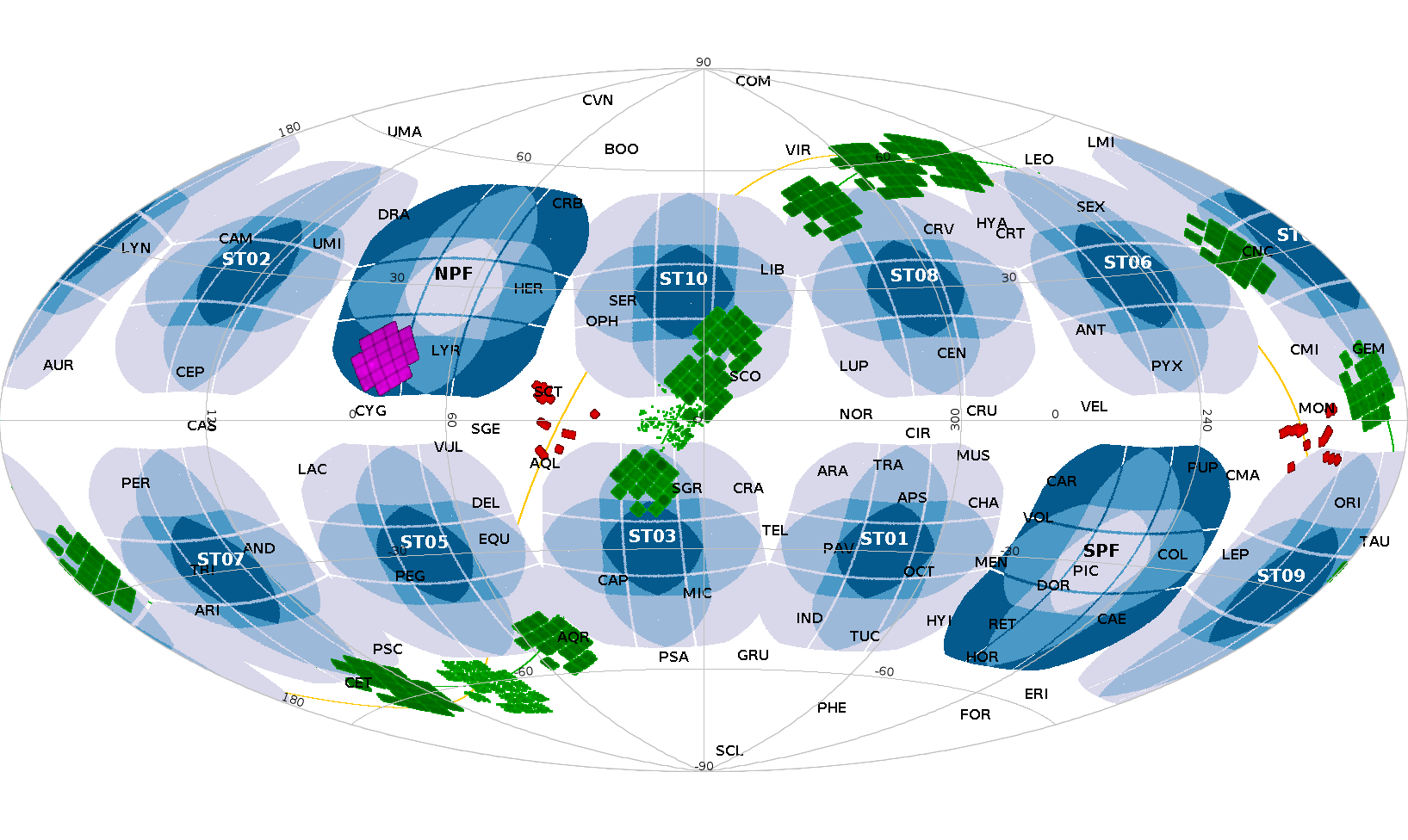The expected PLATO fields are shown in the figure. Its southern long-pointing field is centred near a galactic latitude of -30° and a longitude of 253° (i.e. RA 05h47m, DEC-46°23.5’) and includes the TESS continuous viewing zone. It is not finalized yet. We are expecting ≈2300 square degrees for the full PLATO FOV (48.5° × 48.5° with “round” field edges), which would formally require ≈49 individual pointings by the BMK10k.

Our operations goal is to cover the full PLATO long-pointing field once per night. This is only feasible in a single-filter operation. If we assume a (field) overlapping factor of near 30%, a total of 60 pointings is required by BMK10k to cover the full 2300 square degrees of PLATO. Due to CCD image dynamics and full-well capacity, we envision three exposures per pointing (200s, 60s, and 10s). Detailed exposure times are still tbd.
The first pointing would start at low declination at the west-most observable field depending on the telescope mount and dome limits. Consecutive fields would be observed at increasing declination. The overlap of the pointings is still to be considered. Each pointing has a long exposure with 200s (tbc), a middle exposure with 60s, and a short exposure of 10s (tbc). The single long exposure would cover the magnitude range fainter than 10th mag, the middle exposure will cover stars up to 9th mag, and the short exposure would favour the targets brighter than 8th mag (being 3 mags brighter the exposure has to be shortened by a factor of 7.5 to ensure the proper magnitude range). The exposure times are restricted by background contamination in the Milky Way as well as atmospheric influences as moon-light or sky-glow and also by the tracking precision. Fainter stars than 16th mag are reached with stacking the consecutive images.
